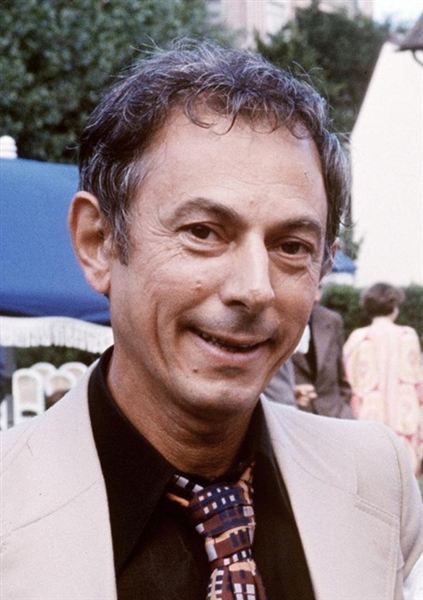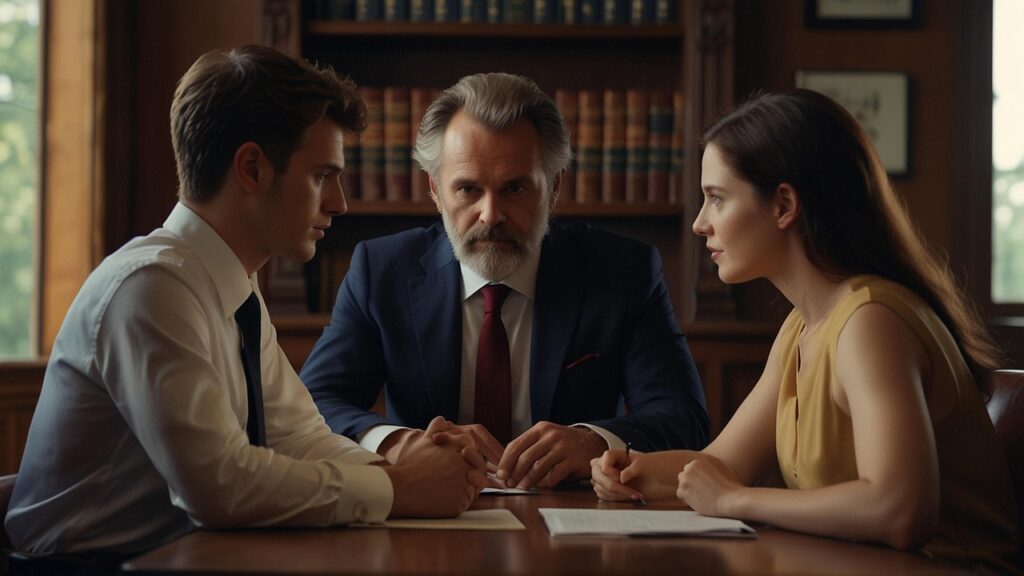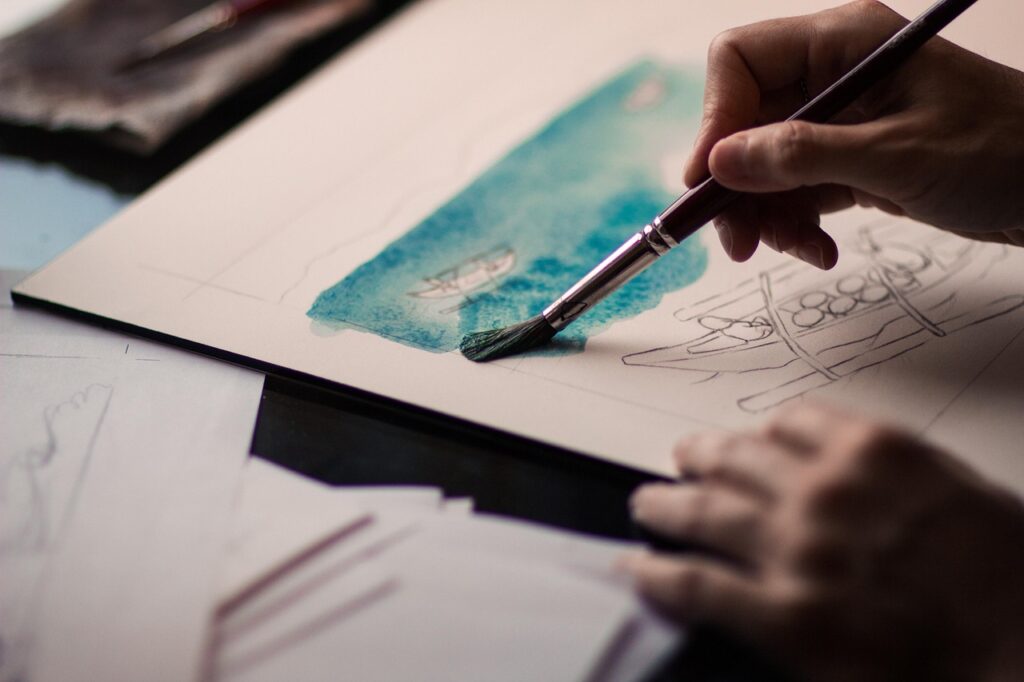
Jacques Charrier, a French actor, film producer, painter, and ceramist whose life spanned decades of cinematic and artistic contributions, passed away on September 3, 2025, at the age of 88. His death, announced by France’s culture minister, Rachida Dati, marks the end of a remarkable trajectory that saw him rise to prominence as a film star and later dedicate himself to the fine arts.
While Mr. Charrier’s public persona was often intertwined with his high-profile marriage to the iconic actress Brigitte Bardot, a relationship that captured international headlines, his legacy extends far beyond that brief, tumultuous period. He was a multifaceted individual whose artistic curiosity and refined sensibility drove him through various creative pursuits, from the dramatic stage to the film set, and ultimately to the quiet solitude of his painting studio.
This article delves into the significant chapters of Jacques Charrier’s life, exploring the diverse influences and pivotal moments that defined his journey. From his foundational artistic training and early cinematic triumphs to the intense spotlight of his celebrity marriage and the personal struggles that reshaped his path, we trace the evolution of a figure who, despite moments of intense public scrutiny, consistently sought authentic expression.

1. **Early Life and Artistic Beginnings** Born on November 6, 1936, in Metz, France, Jacques Charrier’s early life was influenced by his father, Joseph Jules Léon Charrier, a career military officer stationed in the city. However, young Jacques was drawn not to military life, but to the world of art. His initial foray into artistic creation began at the École supérieure des arts décoratifs de Strasbourg, where he pursued his interest in pottery, demonstrating an early aptitude for tactile and visual expression.
After several years immersed in ceramics, Mr. Charrier’s artistic curiosity led him to Paris, where he shifted his focus to dramatic arts. He enrolled at the Conservatoire national supérieur d’art dramatique, a prestigious institution, and also studied at the National School of Arts and Techniques of the theater, known as the Blanche Street school. This period marked his transition from visual arts to performance, setting the stage for his eventual career in cinema.
His talent quickly became evident, earning him a spot as an extra at the Comédie Française. A significant early breakthrough came when he was cast as the male lead in a dramatization of “The Diary of Anne Frank” at the Théâtre Montparnasse. It was during this stage performance that he caught the discerning eye of a celebrated French filmmaker, a moment that would soon launch his film career.
Read more about: Behind the Lens: 6 Visionary Directors Who Conquered Career Obstacles to Craft Cinematic Masterpieces

2. **Breakthrough on Screen: “Les Tricheurs”** The celebrated French filmmaker who spotted Mr. Charrier was Marcel Carné, renowned for classics like “The Children of Paradise.” Carné was captivated by Charrier’s stage presence and subsequently cast him in a pivotal role in his 1958 film, “Les Tricheurs.” This film, released in the United States as both “Young Sinners” and “The Cheaters,” became a defining moment for the young actor.
“Les Tricheurs” depicted the bohemian spirit and decadent lives of Parisian youth in the post-war years, a narrative that resonated widely. Mr. Charrier portrayed a rather hapless young partygoer, opposite Pascale Petit, forming what Bosley Crowther of The New York Times described as “as pretty a pair of virile youngsters as you are likely to meet.” The film was a huge box-office success in Europe, despite its didactic qualities concerning youthful misbehavior.
This breakthrough role not only brought Mr. Charrier critical attention but also firmly established him as a rising star in French cinema. His performance showcased a blend of vulnerability and youthful charm that immediately captivated audiences and critics alike, laying a solid foundation for his burgeoning acting career and setting him on a path toward wider recognition.

3. **The Rise of a French Matinee Idol** Following the success of “Les Tricheurs,” Jacques Charrier rapidly ascended to the status of a French matinee idol. His distinct appearance, characterized by what was described as a “physique as a young first” and an “angelic smile,” quickly drew comparisons to established cinematic figures. Le Monde, for instance, characterized him as “a cross between James Dean and Gérard Philipe,” the beloved French matinee idol, signifying his magnetic screen presence and widespread appeal.
His charisma was further recognized by publications like Paris Match, which famously dubbed Charrier “the man the ladies find irresistible.” This public perception underscored his status as a desirable and captivating young actor, an embodiment of youthful allure in late 1950s French cinema. Directors, too, were drawn to his cinegenic qualities, offering him roles that capitalized on his charm.
One such role was in Jean-Pierre Mocky’s 1959 film “Les Dragueurs” (The Chasers), where he played a cocky womanizer. This role, among others, solidified his image as a suave and engaging performer, making him a household name across France. His early career was marked by a rapid accumulation of fame, preparing him for an even more intense spotlight that was soon to come.
Read more about: Jacques Charrier: The Enduring Legacy of an Actor and Artist Beyond the Bardot Spotlight

4. **Meeting Brigitte Bardot and “Babette Goes to War”** The trajectory of Jacques Charrier’s burgeoning career took a significant turn when he met Brigitte Bardot, who was already an international sex symbol following her role in Roger Vadim’s 1956 film “And God Created Woman.” Bardot, impressed by Charrier, specifically insisted that he appear in her next film, “Babette Goes to War” (Babette s’en va-t-en guerre), a World War II spoof released in 1959.
In the film, Mr. Charrier played Lieutenant Gérard de Crécy-Lozère, the beautiful lieutenant who goes on a mission with Bardot’s character, Babette. Their on-screen chemistry was palpable, and the narrative, which immortalized their love story, concluded with their characters marrying. This cinematic pairing not only led to the film’s success but also blossomed into a real-life romance between the two stars.
“Babette Goes to War” proved to be another big success at the box office, further elevating Charrier’s profile while simultaneously intertwining his fate with that of one of the world’s most famous actresses. The film became a testament to their immediate connection, a cinematic prelude to a personal union that would soon become one of the most talked-about events in France.
5. **France’s Glamour Couple: The Wedding and Media Frenzy** The cinematic romance between Jacques Charrier and Brigitte Bardot quickly transitioned into a highly publicized real-life marriage. In June 1959, the couple exchanged vows in the town of Louveciennes, an event that instantly became a sensation. The wedding was far from a private affair; it was described as being “overrun by a mass of reporters,” who quickly overwhelmed security guards in their eagerness to capture the moment.
Paparazzi from “the five continents” descended upon the event, all eager to photograph “B. B. in a white dress in the arm of his prince charming.” The intensity of the media attention was unprecedented, transforming the couple into “France’s glamour couple of the late 1950s.” Even traditionally staid publications like Le Monde covered the event, reporting the precise time the couple joined hands: 11:30 a.m.
Photos from their wedding day show the couple smiling widely for the cameras, seemingly blissful and radiating an image of idyllic happiness. This public display cemented their status as a celebrated, photogenic pairing, the darlings of the French press. Their union became a cultural touchstone, but beneath the surface of this intense media scrutiny, challenges were already beginning to emerge.
6. **The Unraveling Idyll and Fatherhood** Despite the initial image of a blissful union, the idyll of Jacques Charrier and Brigitte Bardot’s marriage quickly turned sour, ending in bitterness. Their unhappiness was profoundly intensified by Ms. Bardot’s pregnancy, which she later described in her 1996 memoir, “Initiales B.B.,” as “nine nightmarish months.” She made it unequivocally clear then and afterward that the birth of her only child was deeply unwelcome, stating she would have preferred “giving birth to a dog.”
Their son, Nicolas-Jacques Charrier, was born on January 11, 1960. The challenges continued to mount, leading to severe personal distress for both parents. After Nicolas’s birth, Mr. Charrier was hospitalized for nervous depression, an event duly covered by Le Monde, which reassured its readers it was not serious. Ms. Bardot, in turn, attempted suicide, highlighting the profound difficulties plaguing their relationship.
The couple divorced in 1963, marking the end of their tumultuous marriage. In a bitter custody fight that followed, Mr. Charrier gained custody of their son. This period represented a significant turning point, as the onetime movie idol began a slow slide into obscurity, grappling with the aftermath of a highly publicized, yet ultimately unhappy, chapter of his life.
Read more about: The Unseen Fallout: How Arnold Schwarzenegger’s Secret Son Reshaped His Iconic Family’s World
7. **Post-Divorce Career and Retreat from the Film Industry**Following his tumultuous divorce from Brigitte Bardot in 1963, Jacques Charrier’s acting career continued for over a decade, though the intense glare of the spotlight gradually dimmed. He appeared in more than a dozen films throughout the 1960s and 1970s, working with notable directors such as Claude Chabrol and Jean-Luc Godard. His filmography during this period included appearances in Chabrol’s contribution to “The Seven Deadly Sins” (L’avarice, 1962), “The Third Lover” (L’œil du Malin, 1963), and Godard’s segment “Anticipation, ou l’Amour en l’An 2000” within the 1967 film “The Oldest Profession.”
Despite these roles, Charrier’s professional trajectory after the Bardot marriage was not without its complications. His public image was intertwined with the high-profile divorce, and he briefly became the subject of a national security debate in France. In the fall of 1959, amid the Algerian War, the French press reported that Mr. Charrier was reportedly avoiding military service to finish a film, claiming medical exemptions. A Gaullist deputy, Roland Boudet, publicly denounced him in Parliament, questioning why recruits from “the world of high fashion or the arms of a big star” should be treated differently.
Further illustrating the pressures and choices of this period, Mr. Charrier notably turned down the leading role in René Clement’s acclaimed thriller “Purple Noon,” a decision he attributed to Ms. Bardot’s pregnancy. The role subsequently went to Alain Delon, who achieved stardom through it. This moment, coupled with the collapse of Les Films Marquise—a production company Charrier co-founded with Jean-Claude Brialy—signaled a shift in his cinematic involvement, marking the beginning of his eventual departure from mainstream film. His last credited acting role was in the 1981 television drama “Salut champion!” as a sports journalist.
Ultimately, Mr. Charrier fully withdrew from the movie business after a significant setback in 1975. He had produced, but not acted in, “Il Pleut sur Santiago,” a film centered on the 1973 coup in Chile. Despite starring Jean-Louis Trintignant, the film was deemed by Le Monde to be “spoiled by its didacticism” and proved to be a box-office failure. This disappointing experience marked the end of his active involvement in film production and acting, prompting him to seek new avenues for artistic expression and a quieter life away from the public eye.
Read more about: Beyond the Bling: 10 Celebrities Who Married Into Mega-Wealth and Sparked ‘Gold Digger’ Rumors
8. **A Return to Artistic Roots: Painting and Ceramics**Following his definitive retreat from the film industry in the mid-1970s, Jacques Charrier made a deliberate and profound return to his foundational artistic passions: painting and ceramics. This pivot represented a reconnection with his earliest creative inclinations, harkening back to his studies at the École supérieure des arts décoratifs de Strasbourg, where he had initially pursued pottery. It was a conscious decision to embrace the solitude and introspection of fine art, a stark contrast to the demanding and often tumultuous world of cinema.
In 1980, Mr. Charrier further solidified this commitment by re-enrolling at the School of Fine Arts. His renewed dedication manifested in a vibrant body of painting, characterized by references to his two enduring passions: travel and antiquity. These themes infused his canvases with a sense of historical depth and wanderlust, reflecting a more personal and reflective stage of his artistic development. His art offered a window into an interior world, distinct from the public persona he once inhabited.
Over the subsequent decades, Charrier’s artwork gained recognition and was regularly exhibited in various prominent cities, including Paris, Geneva, and San Francisco. His paintings, described by France’s culture minister, Rachida Dati, as embodying “intimate reflection and the search for a certain harmony,” demonstrated a consistent and evolving artistic voice. His dedication to these crafts allowed him to cultivate a new legacy, one built on the quiet discipline and personal expression of the visual arts.
Among his notable artistic endeavors was a distinctive series of 282 paintings inspired by the Code of Hammurabi, a testament to his profound interest in ancient civilizations and legal history. This extensive collection was exhibited at UNESCO Paris in 1996, further cementing his reputation within the art world. Even in his later years, residing in Saint-Briac-sur-Mer, he remained an active artist, presenting a final, moving retrospective titled “Un sourire à la vie,” or “a smile at life,” just months before his passing, showcasing a lifelong devotion to creative pursuit.
9. **The Memoir Controversy: Brigitte Bardot’s “Initiales B.B.”**Almost three decades after their divorce, Jacques Charrier found himself once again thrust into the media spotlight, this time involuntarily, with the publication of Brigitte Bardot’s 1996 memoir, “Initiales B.B.” The book contained an extensive section devoted to their tumultuous marriage and the birth of their son, Nicolas-Jacques, presenting a deeply unflattering and painful account that profoundly impacted Charrier and their son. The passages were described as “viciously attacking him as a bourgeois loser, a freeloader and an egotist.”
Ms. Bardot’s recollections of her pregnancy and motherhood were particularly stark and controversial. She characterized her pregnancy as “nine nightmarish months” and unequivocally expressed her profound regret over having a child. In one widely quoted and distressing passage, she famously wrote that she would have preferred “giving birth to a dog” rather than her son. She also recounted her reaction when Nicolas was presented to her at birth, stating, “I started to cry, begging that he be taken off of me.”
The memoir’s harsh portrayal extended to her ex-husband, who was depicted as a central figure in her unhappiness during that period. She penned a “terrible sentence that bruises Charrier and their son Nicolas,” likening her pregnancy to carrying a “tumor” and describing Nicolas as “the object of my misfortune.” Such candid and brutal revelations, coming from a globally recognized icon, reignited public interest in their past and cast a shadow over Charrier’s quietly cultivated life away from celebrity.
This public attack, after years of discretion, compelled Charrier to respond. It was a direct challenge to his privacy and, crucially, to the well-being of their son, who was also named in the memoir. The controversy highlighted the enduring impact of their brief, intense union, proving that even after decades, the scars of their relationship remained vividly present in the public consciousness and deeply personal for those involved.
10. **Charrier’s Counter-Narrative and Legal Battles**The intensely negative portrayal in Brigitte Bardot’s memoir prompted an immediate and resolute response from Jacques Charrier and their son, Nicolas. They initiated legal proceedings against Ms. Bardot, suing for “violation of privacy” and seeking the suppression of the 80 pages dedicated to them and their relationship. The lawsuit underscored the deep personal distress caused by the memoir’s contents, particularly its depiction of Nicolas’s birth and their family life.
Although Charrier and his son were successful in their lawsuit, being awarded “modest damages” for the violation of privacy, the incriminated passages themselves were not ultimately censored. By the time of the verdict, Ms. Bardot’s book was already a best-seller, ensuring wide dissemination of its controversial claims. Despite the legal victory, the challenge remained to publicly re-establish a more balanced perspective, particularly for his children.
In an effort to “re-establish the truth” and provide his own account, Charrier published his memoir, “Ma Réponse à Brigitte Bardot” (“My Reply to Brigitte Bardot”), in 1997. He explicitly stated that his motivation was “for my children,” to offer a counter-narrative to Bardot’s damaging assertions. In his book, he presented love letters to support his claim that Ms. Bardot had indeed loved both him and Nicolas, directly contradicting her public statements.
This publication led to a further legal entanglement, as Ms. Bardot countersued to have Charrier’s book suppressed. However, her attempt was unsuccessful, and she lost the case. Charrier, reflecting on this public dispute, remarked that if he could “simply focus on my painting,” he would “have happily passed on this kind of publicity,” indicating the reluctance with which he engaged in the public fray, driven primarily by a paternal duty to his son. The book also contained a revelation that Bardot, known for her far-right sympathies, had given him her father’s library, including a signed copy of “Mein Kampf.”
Read more about: Jacques Charrier: The Enduring Legacy of an Actor and Artist Beyond the Bardot Spotlight
11. **Later Life, Marriages, and Quiet Retirement**After the tumultuous chapter with Brigitte Bardot and his subsequent withdrawal from the film industry, Jacques Charrier sought a more stable and private life, though not without further personal developments. His personal life saw several subsequent marriages and the expansion of his family. In 1964, a year after his divorce from Bardot, he married France Louis-Dreyfus, a member of the prominent Louis-Dreyfus family. This union resulted in two daughters, Sophie and Marie, before their divorce in 1967.
Years later, in 1982, Charrier entered his third marriage, meeting Linda, with whom he had another daughter, Rosalie. These marriages highlight his enduring desire for a family life, providing a quieter counterpoint to his highly publicized first union. His commitment to his children was a consistent theme, particularly evident in his response to Brigitte Bardot’s memoir, where he explicitly stated his actions were “for my children.”
From 2009 until his death, Mr. Charrier found companionship and stability in his marriage to Japanese artist Makiko Kumano. This final chapter of his personal life brought a sense of peace and shared artistic sensibility. Throughout these decades, he maintained a distinct distance from the celebrity he had once embodied, dedicating himself to his art and his family, ultimately creating a life rich in personal connection rather than public acclaim.
About a decade before his passing, Mr. Charrier retired peacefully to the picturesque seaside village of Saint-Briac-sur-Mer, on the Brittany coast, where he lived for 13 years. This tranquil setting provided the ideal environment for his artistic pursuits and a quiet final chapter. His life in Saint-Briac was characterized by discretion and a focus on his art, culminating in a final retrospective exhibition of his paintings just months before his death, reflecting a consistent dedication to his craft throughout his extended life.
Read more about: The Most Underrated Celebrity Couples: 15 Iconic Romances You Seriously Need to Be Talking About

12. **A Legacy of Art, Film, and Quiet Dignity**Jacques Charrier passed away on September 3, 2025, at the age of 88, at his home in Saint-Briac-sur-Mer. His death was announced by France’s culture minister, Rachida Dati, marking the end of a life that seamlessly blended the realms of cinema, fine art, and personal resilience. Though often remembered for his brief and intense marriage to Brigitte Bardot, his legacy extends far beyond that singular, publicized chapter, encompassing significant contributions as an actor, a film producer, a painter, and a ceramist.
Mr. Charrier’s career, spanning from his meteoric rise as a French matinee idol in the late 1950s to his later dedication to painting and ceramics, demonstrated a consistent artistic sensibility and a profound curiosity. His early cinematic successes, particularly “Les Tricheurs” and “Babette Goes to War,” cemented his place in French cinema history, showcasing a blend of youthful charm and dramatic depth that captivated audiences and critics alike. His collaborations with esteemed directors further attest to his talent and versatility on screen.
In his later years, Charrier cultivated a legacy defined by artistic sincerity and a preference for privacy over public adulation. His return to painting and ceramics in the 1980s, culminating in exhibitions in major cities and a final retrospective, underscored his lifelong commitment to creative expression. Minister Dati, in her statement, highlighted Mr. Charrier’s “discretion and elegance” as qualities that “would remain in our memories,” offering a poignant reflection on a man who, despite experiencing intense media scrutiny, ultimately chose a path of quiet dignity and artistic integrity.
He is survived by his wife, Makiko Kumano, his son, Nicolas-Jacques Charrier, and his three daughters from earlier marriages: Sophie, Marie, and Rosalie, along with his grandchildren. Jacques Charrier leaves behind a multifaceted legacy, not merely as a movie star, but as a dedicated artist and a man who navigated the complexities of fame and personal challenge with an unwavering commitment to his family and his passions. His life story stands as a testament to the enduring power of art and the pursuit of authentic self-expression.
Read more about: Revisiting Box Office Bombs: How These Cinematic Gems Defied Initial Failure to Become Undeniable Masterpieces
In reflection, Jacques Charrier’s journey offers a compelling narrative of an artist who traversed the dazzling, yet often demanding, landscapes of cinema and public life before finding solace and profound expression in the quiet world of visual art. His story is a poignant reminder that while fame can be fleeting and tumultuous, true artistic passion and personal integrity endure, shaping a legacy that resonates long after the curtains fall and the canvas dries.










